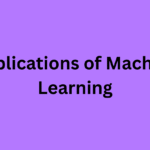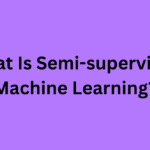Chapter 1: Introduction to Ethical Hacking
-
1.1) What is Ethical Hacking?
-
1.2) Types of Hackers
-
White Hat, Black Hat, Grey Hat
-
-
1.3) Ethical Hacking vs Malicious Hacking
-
1.4) Scope and Need of Ethical Hacking
-
1.5) Legal Framework and Cyber Laws
-
1.6) Phases of Ethical Hacking
-
Reconnaissance, Scanning, Gaining Access, Maintaining Access, Clearing Tracks
-
Chapter 2: Footprinting and Reconnaissance
-
2.1) Introduction to Footprinting
-
2.2) Types of Footprinting
-
Active vs Passive
-
-
2.3) Tools and Techniques
-
Whois, Nslookup, Google Hacking, Social Engineering
-
-
2.4) Countermeasures to Footprinting
Chapter 3: Scanning Networks
-
3.1) Network Scanning Concepts
-
3.2) Types of Scanning
-
Port Scanning, Network Scanning, Vulnerability Scanning
-
-
3.3) Scanning Tools
-
Nmap, Angry IP Scanner
-
-
3.4) Banner Grabbing and OS Fingerprinting
-
3.5) Firewall and IDS Evasion Techniques
Chapter 4: Enumeration
-
4.1) Basics of Enumeration
-
4.2) Techniques of Enumeration
-
NetBIOS, SNMP, LDAP, SMTP Enumeration
-
-
4.3) Enumeration Tools
-
SuperScan, Enum4linux
-
-
4.4) Countermeasures to Enumeration
Chapter 5: System Hacking
-
5.1) Gaining Access to Systems
-
5.2) Password Cracking Techniques
-
Brute Force, Dictionary Attack, Rainbow Tables
-
-
5.3) Privilege Escalation
-
5.4) Keyloggers, Spyware, and Trojans
-
5.5) Rootkits and Steganography
-
5.6) Covering Tracks
Chapter 6: Malware and Virus Threats
-
6.1) Types of Malware
-
Virus, Worm, Trojan, Ransomware, Adware
-
-
6.2) Malware Analysis Techniques
-
6.3) Antivirus Evasion
-
6.4) Backdoors and Remote Access Tools
Chapter 7: Sniffing and Session Hijacking
-
7.1) What is Sniffing?
-
7.2) Types of Sniffing Attacks
-
Passive, Active
-
-
7.3) Packet Sniffing Tools
-
Wireshark, Tcpdump
-
-
7.4) ARP Poisoning and MAC Flooding
-
7.5) Session Hijacking Techniques
-
TCP/IP Hijacking, Man-in-the-Middle (MITM) Attacks
-
Chapter 8: Web Application Hacking
-
8.1) Introduction to Web Application Security
-
8.2) Common Vulnerabilities
-
SQL Injection, Cross-Site Scripting (XSS), Cross-Site Request Forgery (CSRF)
-
-
8.3) Exploitation Tools
-
Burp Suite, OWASP ZAP
-
-
8.4) Security Testing with OWASP Top 10
Chapter 9: Wireless Network Hacking
-
9.1) Wireless Networking Basics
-
9.2) Wireless Encryption Techniques
-
WEP, WPA, WPA2
-
-
9.3) Attacking Wireless Networks
-
Packet Injection, Evil Twin, Rogue Access Points
-
-
9.4) Tools for Wireless Attacks
-
Aircrack-ng, Kismet
-
Chapter 10: Penetration Testing and Countermeasures
-
10.1) What is Penetration Testing?
-
10.2) Types of Penetration Testing
-
Black Box, White Box, Grey Box
-
-
10.3) Penetration Testing Phases
-
Planning, Discovery, Exploitation, Reporting
-
-
10.4) Writing a Penetration Testing Report
-
10.5) Countermeasures and Defense Mechanisms
Chapter 11: Cloud, IoT, and Mobile Hacking
-
11.1) Cloud Security Threats
-
11.2) Hacking Techniques in Cloud Environments
-
11.3) IoT Vulnerabilities and Attacks
-
11.4) Mobile Application Security
-
Android and iOS Security Issues
-
-
11.5) Tools for Mobile and IoT Security Testing
Chapter 12: Cybersecurity Best Practices
-
12.1) Incident Response and Handling
-
12.2) Digital Forensics Basics
-
12.3) Risk Assessment and Management
-
12.4) Cybersecurity Policies and Compliance
-
GDPR, ISO 27001
-






